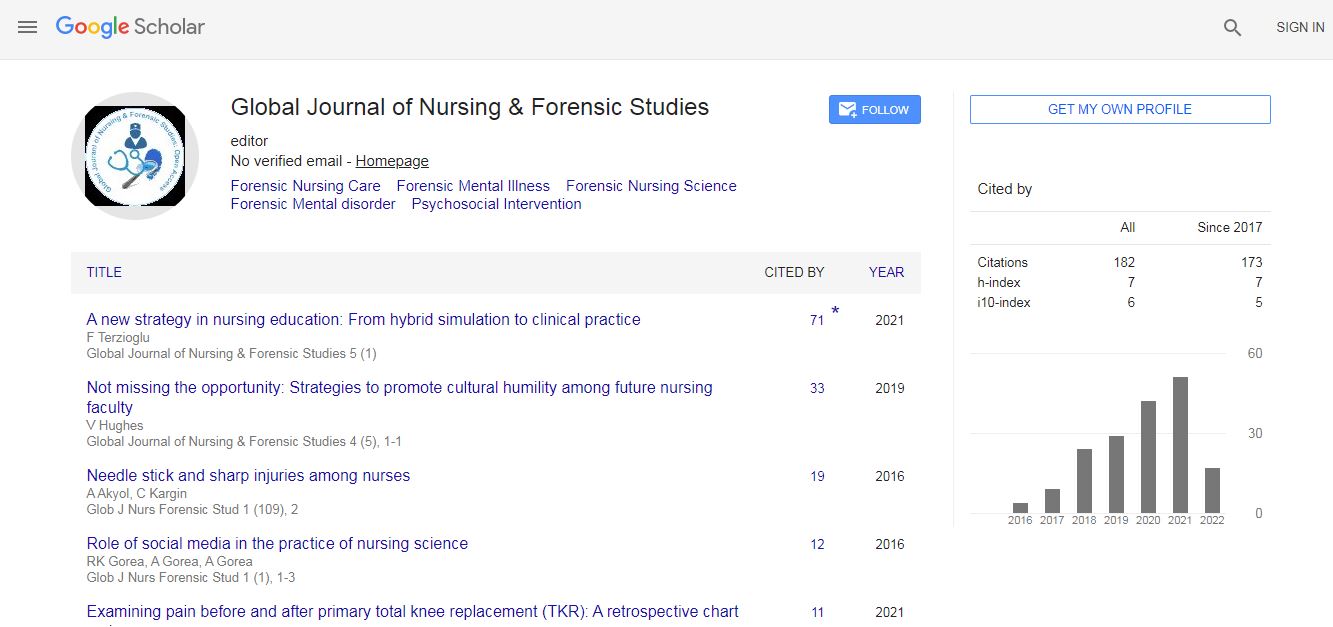Our Group organises 3000+ Global Conferenceseries Events every year across USA, Europe & Asia with support from 1000 more scientific Societies and Publishes 700+ Open Access Journals which contains over 50000 eminent personalities, reputed scientists as editorial board members.
Open Access Journals gaining more Readers and Citations
700 Journals and 15,000,000 Readers Each Journal is getting 25,000+ Readers
Google Scholar citation report
Citations : 82
Optometry: Open Access received 82 citations as per Google Scholar report
Indexed In
- Google Scholar
- RefSeek
- Hamdard University
- EBSCO A-Z
- Euro Pub
- ICMJE
Useful Links
Recommended Journals
Related Subjects
Share This Page
The topical azithromycin meibomian gland dysfunction survey: The effect of topical azithromycin on signs and symptoms of meibomian gland dysfunction
5th International Conference on Optometry
Ian Jarvis1, Sara McCullough2, John Jarvis1
1Jarvis Eyecare, UK 2Ulster University, UK
Posters & Accepted Abstracts: Optom Open Access
Abstract
Introduction: The aim of this study was to assess the long-term effects of topical azithromycin on signs, symptoms and self-management of meibomian gland dysfunction (MGD). Methods: Forty participants were assessed for MGD and its effect on the fluorescein tear break-up time (FTBUT). Participants were treated with topical azithromycin twice daily for 2 weeks and then once daily for a further 2 weeks. One year after treatment, 31 participants completed a survey assessing pre-and post-treatment effect on symptoms, lifestyle and self-treatment methods. Results: Following treatment, there was a significant reduction in MGD grading from a median of grade 2 to grade 0 (z = 4.40, p < 0.0001) and an increase in FTBUT from a median of 3–8 s (z = 4.75, p < 0.0001). One year afterwards, the survey showed a significant improvement in symptoms (sensitivity to light, grittiness, burning, blurred vision, all p < 0.03) and reduction in required self-treatments (lid wipes, tear substitutes, both p < 0.03). There was also a reduced impact on lifestyle, (reading, night driving, computer use and watching television, all p < 0.0001) and in all environmental conditions (all p < 0.0001). Conclusions: This study confirms the positive effect of topical azithromycin on MGD and shows it has a long-term impact on symptoms, self-treatment methods and lifestyle. This has implications for both chair time and healthcare costs when managing patients with MGD. Pending further clinical trials in a larger population with different demographics, topical azithromycin should be considered by all eyecare practitioners as a viable pharmacological treatment when managing MGD.Biography
Ian Jarvis is a Principal Optometrist. Qualified in 1984 from Glasgow Caledonian University and has run his own independent practice for over 30 years. He passed the final assessment for Ocular Therapeutics in 2011 and is registered as an Independent Prescriber. In 2022, he gained an advance qualification in Glaucoma management (NESGAT), allowing him to manage Glaucoma patients in the community. He is currently on the Optometry Scotland council which liaises with the Scottish Government and other professional bodies, helping to advance the profession in Scotland.

 Spanish
Spanish  Chinese
Chinese  Russian
Russian  German
German  French
French  Japanese
Japanese  Portuguese
Portuguese  Hindi
Hindi 